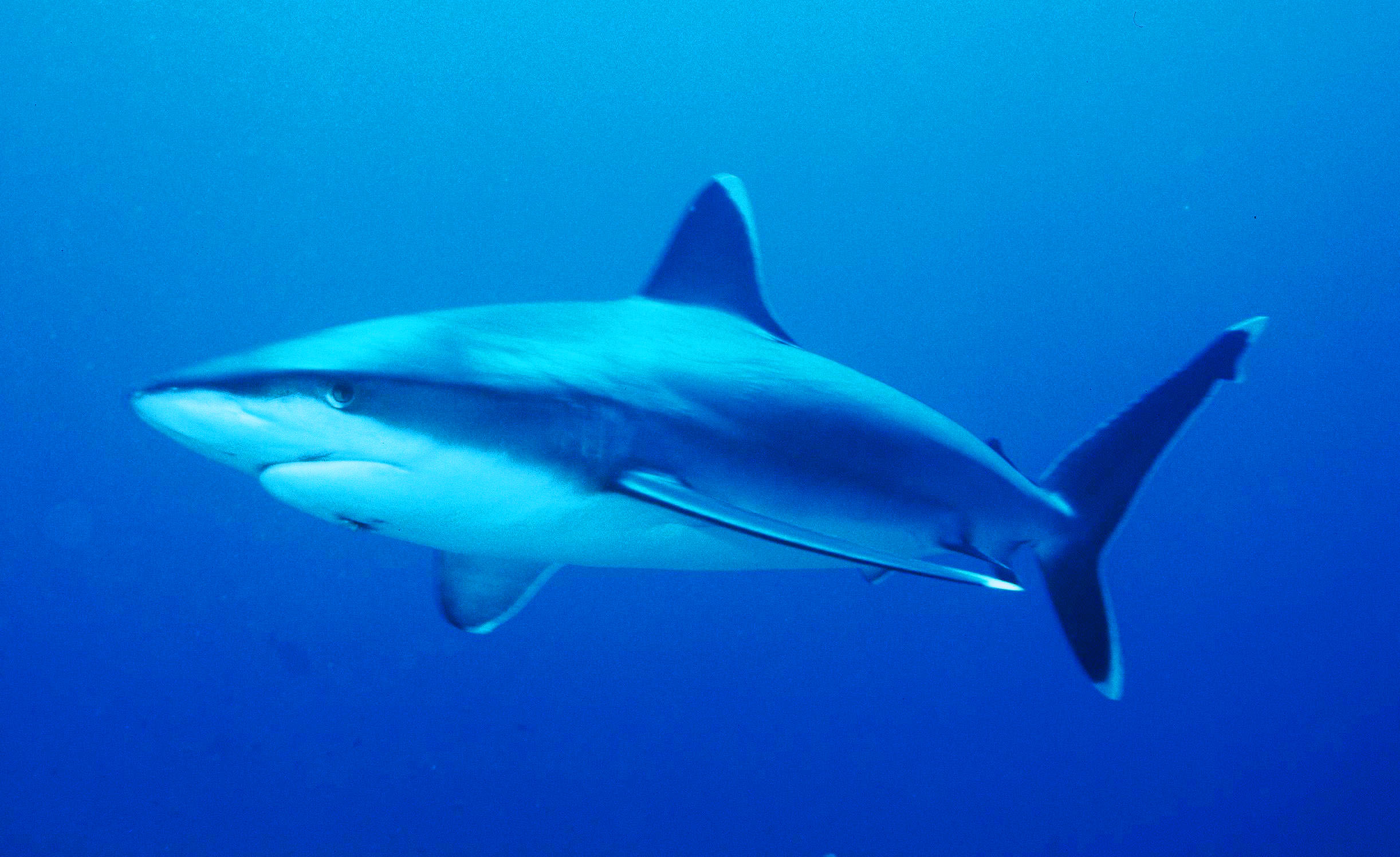Hello ladies and gents this is the Viking telling you that today we are talking about
THE SILVERTIP SHARK
The silvertip shark (Carcharhinus albimarginatus) is a large species of requiem shark, in the family Carcharhinidae, with a fragmented distribution throughout the tropical Indian and Pacific Oceans. This species is often encountered around offshore islands and coral reefs, and has been known to dive to a depth of 800 m (2,600 ft). The silvertip shark resembles a larger and bulkier grey reef shark (C. amblyrhynchos), but can be easily identified by the prominent white margins on its fins. It attains a maximum length of 3 m (10 ft).
An aggressive, powerful apex predator, the silvertip shark feeds on a wide variety of bony fishes, as well as eagle rays, smaller sharks, and cephalopods. This species dominates other requiem sharks of equal size when competing for food, and larger individuals are often heavily scarred from conflicts with others of its species. As with other members of its family, the silvertip shark is viviparous, with females giving birth to one to 11 pups in the summer. Silvertip sharks are regarded as potentially dangerous to humans, as they often approach divers quite closely. This slow-reproducing species is taken by commercial fisheries for its meat, fins, skin, cartilage, and jaws and teeth, which has apparently led to local population declines or extirpations.
The silvertip shark was originally described as Carcharias albimarginatus by German naturalist Eduard Rüppell, in the 1837 Fische des Rothen Meeres (Fishes of the Red Sea). The name was later changed to the currently valid Carcharhinus albimarginatus. The specific epithet is derived from the Latin albi meaning "white", and marginatus meaning "to enclose with a border", in reference to the distinct white fin margins.
In 1960, a 103 cm (3.38 ft)-long immature male caught off Ras Muhammad in the Red Sea was designated as the type specimen. Based on similarities in morphology, tooth shape, and vertebral characters, Garrick (1982) proposed the grey reef shark as the closest relative of the silvertip shark. This interpretation was corroborated by Lavery (1992), based on allozyme data.
Distribution and habitat
Silvertip sharks are most often found on or near coral reefs.The silvertip shark is widely but not continuously distributed in the tropical Indian and Pacific Oceans. In the western Indian Ocean, this species occurs from the Red Sea to South Africa, including Madagascar, the Seychelles, the Aldabra Group, Mauritius and the Chagos Archipelago.
In the western Pacific, it is known from off southern Japan to northern Australia, including Taiwan, the Philippines, Indonesia, Papua New Guinea, New Caledonia, Guam, Palau, the Solomon Islands, the Marshall Islands, the Phoenix Islands and Tahiti. In the eastern Pacific, it occurs from southern Baja California to Colombia, including the Cocos, Galapagos, and Revillagigedo Islands. Its presence in the Gulf of Mexico and the Caribbean Sea is unconfirmed.
Silvertip sharks are found over continental and insular shelves at a depth of 30–800 m (98–2,625 ft), occupying all levels of the water column. They are most common around isolated islands, coral banks, and reef drop-offs. Juveniles frequent coastal shallows or lagoons, while adults occur in deeper water, with little overlap between the two age groups.
Description
The silvertip shark is a robust and streamlined species with a moderately long, broad snout and large, round eyes. The five pairs of gill slits are short. It has 12–14 tooth rows on each side of both jaws, with one or two small teeth at the symphysis (middle of the jaws). The upper teeth are broad with oblique triangular cusps and coarse serrations near the base; the lower teeth have erect cusps with fine serrations. The first dorsal fin is large and triangular, originating above or slightly forward of the free pectoral fin tips. A ridge occurs between the first and second dorsal fins. The pectoral fins are proportionately longer than in most requiem sharks and falcate (sickle-like) in shape, with pointed tips.
The coloration is blue-gray above with a bronze sheen, and white below. A subtle white band runs along the sides, with distinctive white tips and borders on all fins. Silvertip sharks can grow up to 3 m (9.8 ft) long, but typically measure 2.0–2.5 m (6.6–8.2 ft) in length. The maximum reported weight is 162.2 kg (358 lb). Females are larger than males
I hope you liked this post i am really enjoying learning with you guys and as always have a chilled day from the Viking

Comments
Post a Comment